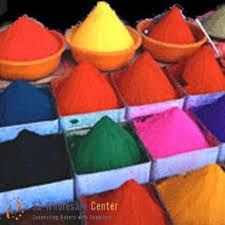





FOB Price
Get Latest Price( Negotiable )
|5 Kilogram Minimum Order
Country:
India
Model No:
-
FOB Price:
( Negotiable ) Get Latest Price
Place of Origin:
-
Price for Minimum Order:
-
Minimum Order Quantity:
5 Kilogram
Packaging Detail:
As specified by the Customer
Delivery Time:
15 TO 20 Days
Supplying Ability:
1000 Kilogram per Week
Payment Type:
T/T, L/C, D/A, D/P, Western Union, Money Gram
Product Group :
-
India
Contact Person Mr. NIMESH
203,Sangath Apartment,Shilpinagar,kalanala, Bhavnagar, Gujarat
Disperse Dyes
| Country: | India |
| Model No: | - |
| FOB Price: | ( Negotiable ) Get Latest Price |
| Place of Origin: | - |
| Price for Minimum Order: | - |
| Minimum Order Quantity: | 5 Kilogram |
| Packaging Detail: | As specified by the Customer |
| Delivery Time: | 15 TO 20 Days |
| Supplying Ability: | 1000 Kilogram per Week |
| Payment Type: | T/T, L/C, D/A, D/P, Western Union, Money Gram |
| Product Group : | - |